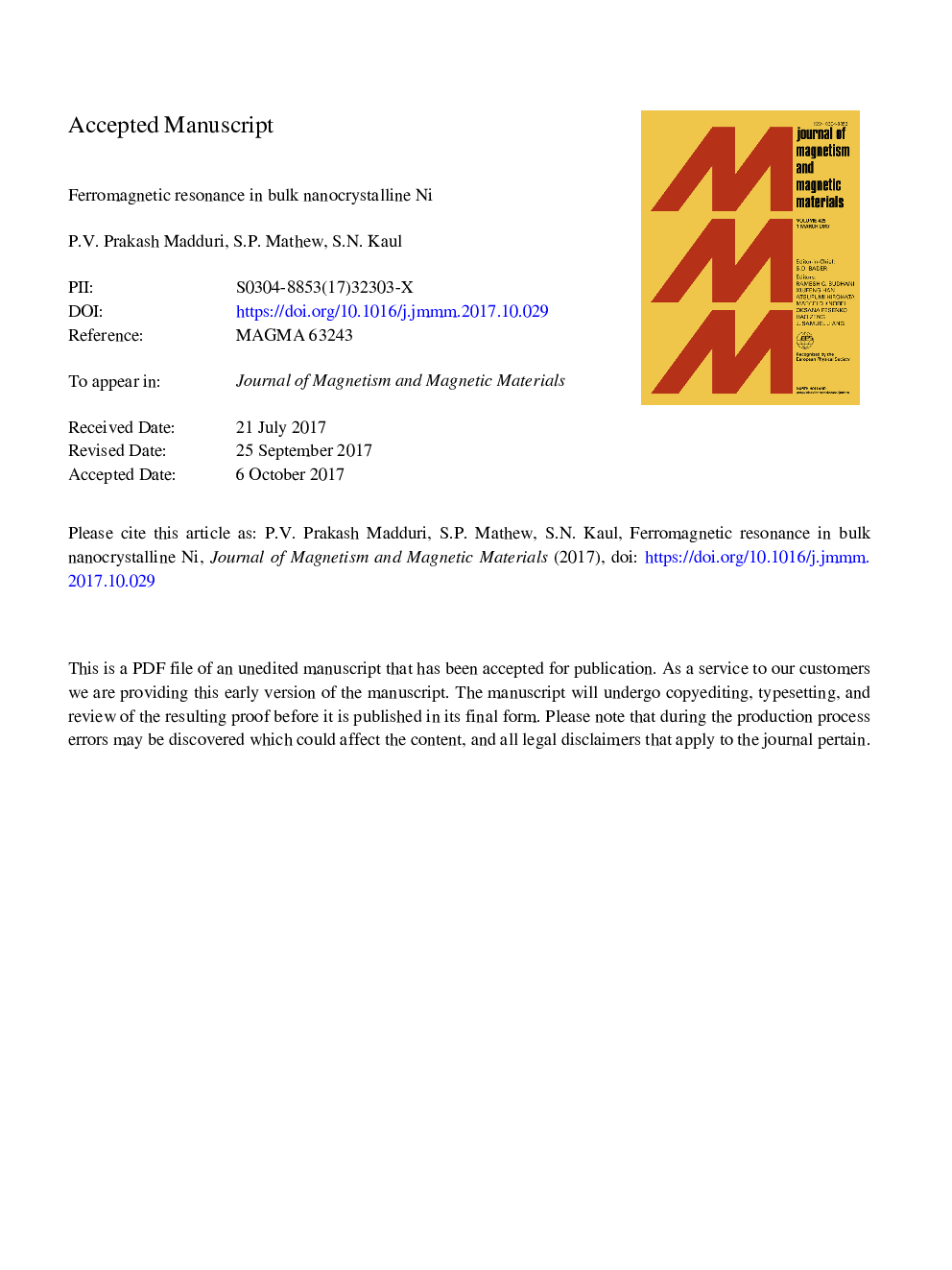| Article ID | Journal | Published Year | Pages | File Type |
|---|---|---|---|---|
| 8154201 | Journal of Magnetism and Magnetic Materials | 2018 | 11 Pages |
Abstract
A detailed lineshape analysis of the ferromagnetic resonance (FMR) spectra taken on pulse electrodeposited nanocrystalline (nc-) Ni sheets (with the average crystallite size, d, varying from 10â¯nm to 40â¯nm) at temperatures ranging from 113â¯K to 325â¯K yield accurate values for saturation magnetization, Ms(T), Landé splitting factor, g, anisotropy field, Hk(T), resonance field, Hres, and FMR linewidth, ÎHpp(T). Thermally-excited spin-wave (SW) excitations completely account for Ms(T) and the SW description of Ms(T) gives the values for the saturation magnetization and spin-wave stiffness at absolute zero of temperature, i.e., Ms(0) and D0, for nc-Ni samples of different d that are in excellent agreement with the corresponding values deduced previously from an elaborate SW analysis of the bulk magnetization data. While Ms(0) varies with d as Ms(0)~d-3/2,D0 follows the power law D0â¼d4/3. The angular variations of Hres in the 'in-plane' as well as 'out-of-plane' sample configurations, demonstrate that the main contribution to Hk(T) comes from the cubic magnetocrystalline anisotropy. The exchange-conductivity mechanism describes the observed thermal decline of ÎHpp reasonably well but fails to explain the very large magnitude of ÎHpp at any given temperature. By comparison, the Landau-Lifshitz-Gilbert (LLG) damping gives a much greater contribution to ÎHpp but the LLG contribution is relatively insensitive to temperature.
Related Topics
Physical Sciences and Engineering
Physics and Astronomy
Condensed Matter Physics
Authors
P.V. Prakash Madduri, S.P. Mathew, S.N. Kaul,
